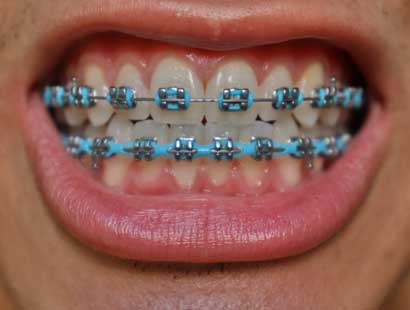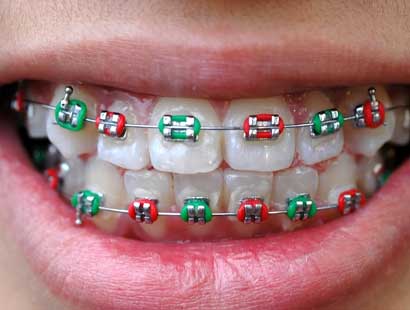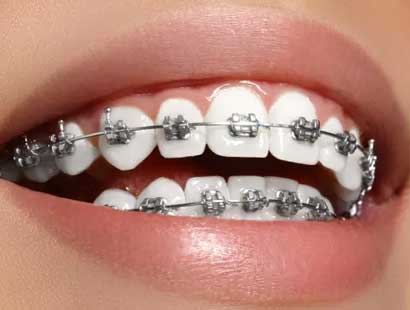





Some of the most popular types of cosmetic braces are inside braces, clear aligners, and ceramic brackets. Ceramic braces are not that different from metal braces: they use tooth-coloured brackets and sometimes tooth coloured wires instead of metal wires and brackets. The tooth coloured ceramic blends into your teeth which makes them much less noticeable than metal braces.
However, these ceramic braces are not as invisible as inside braces and clear aligners. Clear aligners and inside braces (also known as invisible braces, iBraces, or lingual braces) make the treatment look virtually invisible.
Clear braces are made up of weaker and more brittle composite materials than the stainless steel of metal braces.
In order to hold them to the arch wire, ceramic brackets are larger than metal brackets and have small elastic bands (also called ligatures), or built in spring clips on self-ligating brackets. These ligatures may stain because of their white or clear colour. However, as the ligatures are changed almost monthly, or every time you come in for an adjustment, the staining is not a problem. The self-ligating clips do not need any retying with wires or elastics. Cermaic brackets are not removable until the end of the treatment. Like metal braces, ceramic braces may cause discomfort, irritation, and complications with regular oral care, eating, and speaking. Clear braces most often require a longer treatment time, as they are not as strong as metal braces. Your orthodontist may need to apply a slower and more gradual force to the braces in order to ensure the clear brackets are not overtaxed. Ceramic braces are somewhat more expensive than metal braces at about $500 more. Some patients can choose to have ceramic braces placed on the most visible teeth such as the upper center teeth and have metal braces applied on all other teeth. However, there is a possibility of tooth abrasion if the incisal edges of the upper front teeth touch the lower ceramic brackets.





